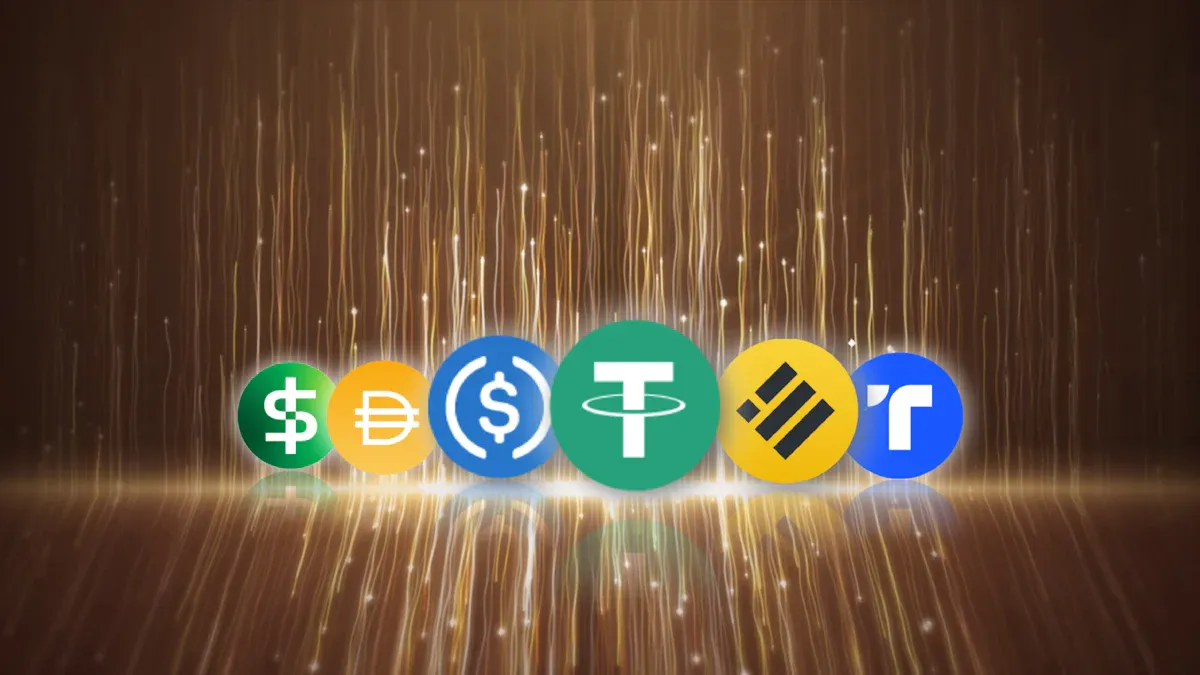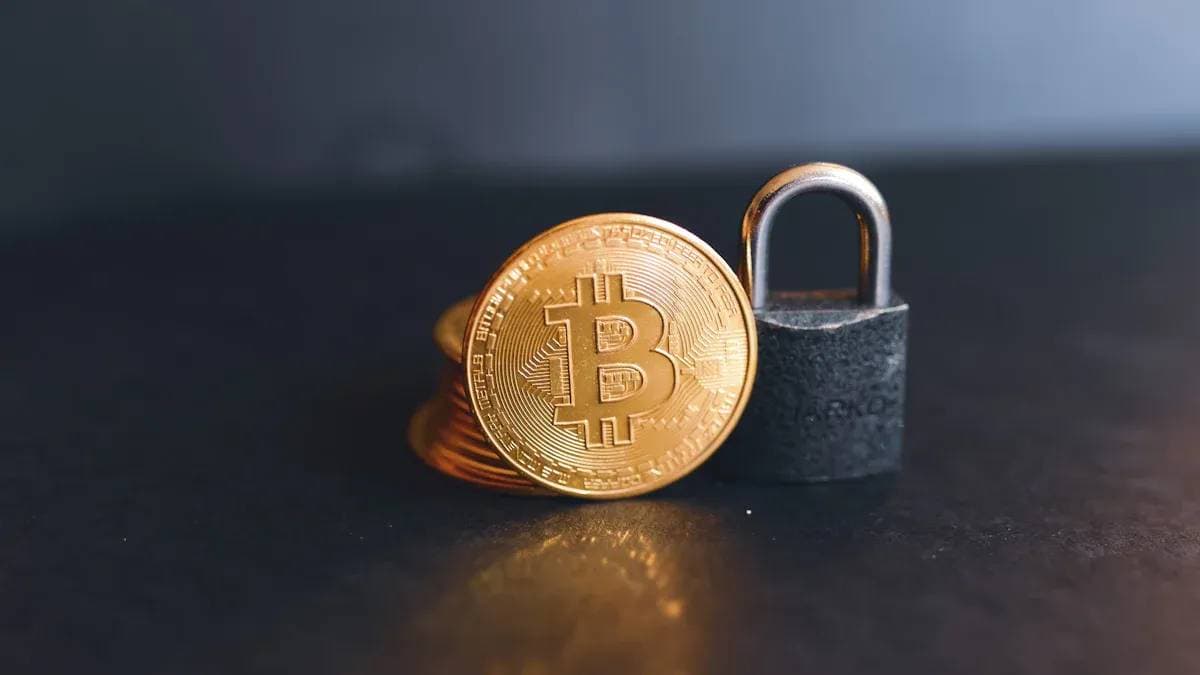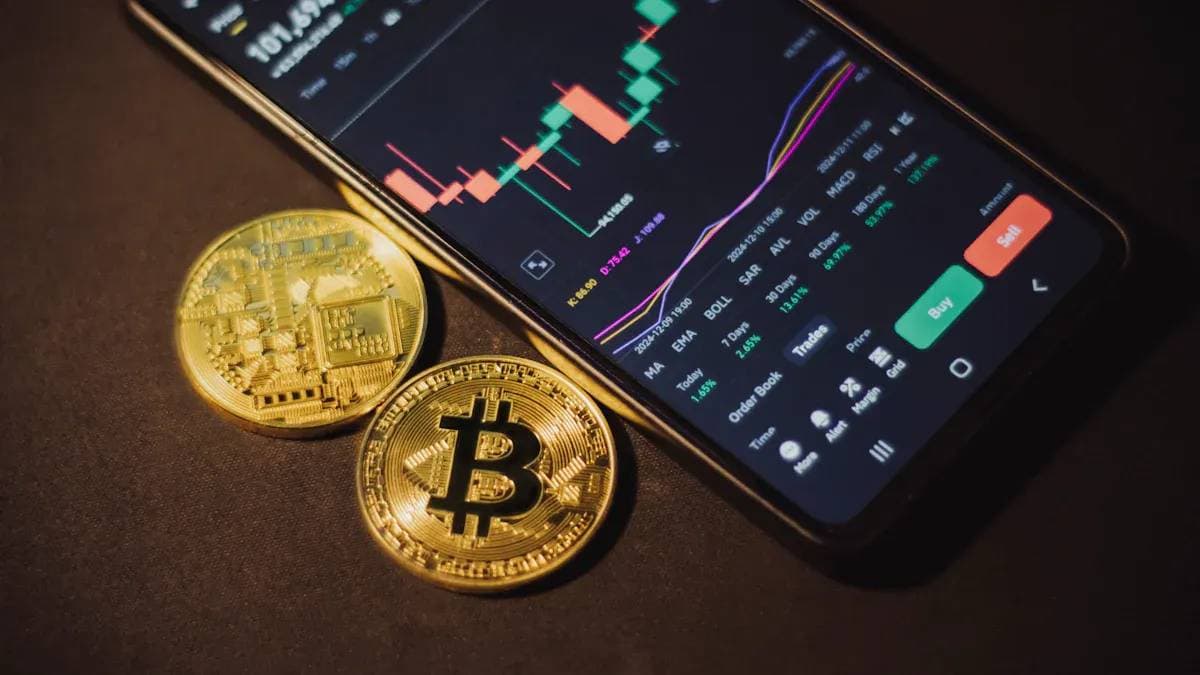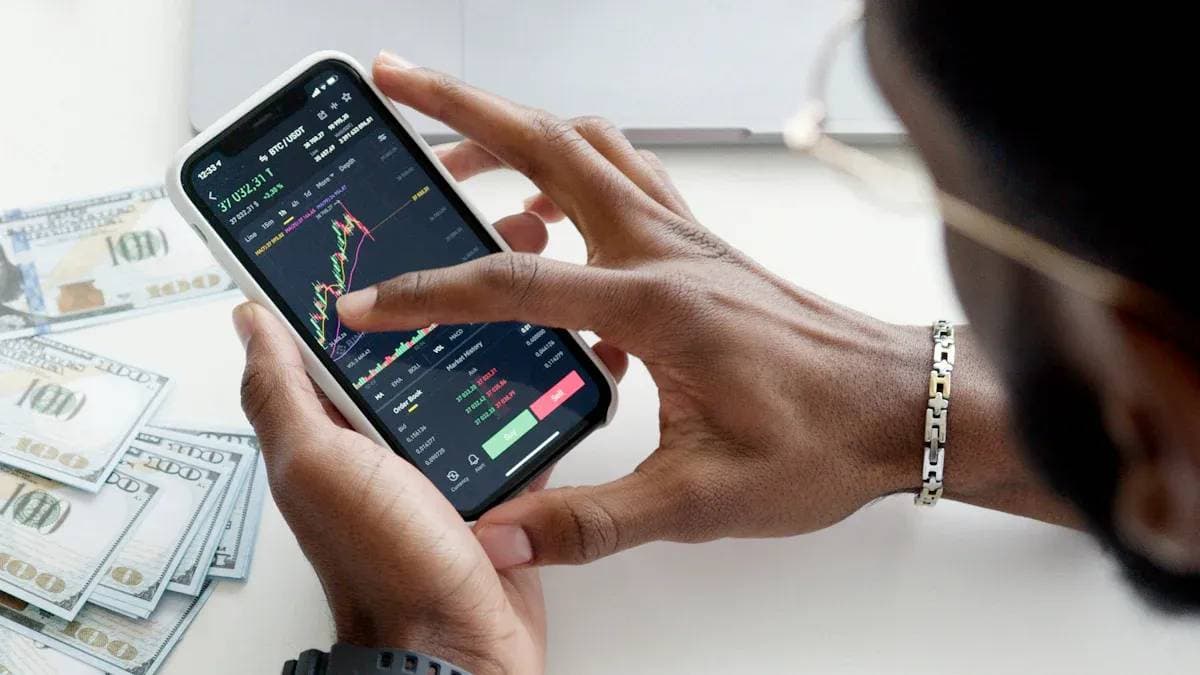- EasyCard
- Trade
- Help
- Announcement
- Academy
- SWIFT Code
- Iban Number
- Referral
- Customer Service
- Blog
- Creator
From Days to Minutes: How Stablecoin Remittances Disrupt Traditional Bank Transfers

Image Source: unsplash
Do you want to achieve minute-level USDT arrival? The core methods are simple: choose the TRC20 network, optimize stablecoin remittances, and make good use of exchange internal transfers. You will no longer be bound by bank operating hours, because stablecoins are a true 24/7 global fund network.
| Transaction Type | Average Settlement Time | Operating Time Restrictions |
|---|---|---|
| International Bank Wire | Days (1-3 business days) | Restricted by bank hours, cutoff times, weekends, and holidays |
| Stablecoin Transaction | Minutes (even seconds) | 24/7 operation, unrestricted by time zones, weekends, or holidays |
Get ready to experience the leap in remittance speed from days to minutes.
Key Takeaways
- Choosing the TRC20 network can help you send USDT faster and cheaper.
- Understanding Gas fees and using tools to query real-time fees can help you optimize transfer speed and cost.
- Using exchange internal transfer functions can achieve zero cost and second-level arrival.
- Carefully verifying addresses and networks before transfer can prevent fund loss.
- Completing identity verification (KYC) in advance can increase your withdrawal limits and avoid delays.
Choosing the Optimal Transfer Network: The First Gate for Speed and Cost

Image Source: unsplash
Choosing the correct blockchain network is your first and most critical step to achieving fast, low-cost remittances. This is like choosing a courier service; different options determine the delivery speed and postage of the package (your funds). In the stablecoin world, the two most common options are Ethereum-based ERC20 and TRON-based TRC20.
TRC20 vs. ERC20: Speed and Cost Comparison
When you send USDT, choosing different networks directly affects your handling fees and arrival time. The ERC20 network is known for its powerful ecosystem but usually comes with higher fees and slower speeds. In contrast, the TRC20 network shows huge advantages in speed and cost.
You can intuitively see their differences through the table below:
| Network Type | Average Handling Fee (Gas Fee) | Average Confirmation Time |
|---|---|---|
| ERC20 (Ethereum) | About $8.00 USD | May take tens of minutes to hours |
| TRC20 (TRON) | About $2.00 USD | Usually completed within minutes |
Tip: During network congestion, both networks’ fees and times may increase. But under normal circumstances, TRC20’s cost advantage remains obvious.
Why TRC20 is the Top Choice for Small, High-Frequency Transactions
TRC20’s low fees and high speed make it ideal for handling small, high-frequency transactions. Imagine a payment app needing to process hundreds of small transactions daily. If using ERC20, high Gas fees would quickly accumulate and erode profits. TRC20 ensures smooth and economical operations.
For individual users, this means:
- International remittances: You can send small funds to family or friends overseas without worrying about high bank fees.
- Daily payments: You can use it for online shopping or bill payments, with transactions completing almost instantly at very low cost.
Choosing the TRC20 network is the simplest and most direct way to optimize the stablecoin remittance experience.
Choices Beyond USDT: Understanding USDC
Although USDT is currently the most popular stablecoin, you have other excellent options, such as USDC (USD Coin). USDC is also pegged 1:1 to the USD and is favored by many institutions for its high transparency and compliance.
In recent years, USDC has played an increasingly important role in cross-border payments. For example, Latin America’s crypto platform Bitso uses stablecoins (including USDC) to provide efficient cross-border payment solutions for users. In this way, remittance costs from the US to Mexico have been reduced by up to 50%. This shows that stablecoins are becoming an important tool for global commercial settlements, not just for personal transfers.
How to Optimize Stablecoin Remittances to Accelerate Confirmation
You have chosen the network, but how to ensure your funds arrive at the fastest speed? The answer lies in the details of optimizing stablecoin remittances. This is like driving on a highway; even with good road conditions, your driving skills and willingness to pay “tolls” determine how quickly you reach your destination.
Understanding the Relationship Between Gas Fees and Arrival Speed
Gas fees are the costs you pay to network validators for any operation on the blockchain (such as transfers). You can think of it as an “express delivery surcharge” or “highway toll.”
The higher the fee you pay, the more motivated validators are to prioritize your transaction. This is especially important during network busyness.
- Priority Fee: This part is also called “tip,” an incentive paid directly to validators. Paying a higher tip can significantly increase the speed of your transaction being packed.
- Impact of Network Congestion: When the network is very congested (for example, during Bitcoin network busyness), even high fees may extend processing time. However, in most cases, higher fees mean faster confirmation.
Interestingly, after Ethereum introduced the EIP-1559 mechanism, fee estimation became easier, reducing transaction processing time to some extent. However, when ETH prices fluctuate dramatically, processing time still extends significantly.
Use Tools to Query Real-Time Gas Fees
Checking real-time Gas fees before transferring is a crucial step. This helps you avoid paying too much or too little. You can use the following tools to get real-time data:
- Etherscan Gas Tracker: This is the most authoritative Gas fee query tool for the Ethereum network. It analyzes blockchain traffic in real time and provides fee suggestions for
Low,Medium, andHighpriority levels. These suggestions correspond to different confirmation speeds, allowing you to choose based on your urgency. - OKLink: This is a multi-chain blockchain explorer where you can query Gas fees for multiple networks, including Ethereum and TRON.
- gasfees.org: This platform goes further, displaying real-time Gas data for over 27 chains in one dashboard, ideal for users handling multi-chain assets.
How to interpret the data? When you see the “High, Medium, Low” suggestions on Etherscan, they represent the cost you are willing to pay for transaction speed.
- High (Fast): Paying this fee gives your transaction a high chance of confirmation in the next block, the fastest speed.
- Medium (Standard): A balanced choice with moderate speed and reasonable cost.
- Low (SafeLow): The most economical choice, but your transaction may wait several minutes or longer for confirmation.
Practical Tips for Setting Optimal Gas Fees
After understanding real-time fees, you can manually set Gas fees in your wallet to precisely control cost and speed. Taking the common MetaMask wallet as an example:
For Ethereum (ERC20) network:
- Initiate a transaction and find the “Gas Fee” or similar option in the confirmation window.
- Click “Edit” or “Advanced Options” to access the custom Gas fee interface.
- You can directly select the wallet’s “High, Medium, Low” tiers or enable “Advanced Gas Control” to manually input
Max Priority Fee(priority fee) andMax Fee(maximum fee). - Refer to Etherscan data, input a competitive price, and confirm the transaction.
Professional Tip: In MetaMask’s “Settings” -> “Advanced,” you can turn on the “Advanced Gas Control” switch. This allows you to directly set Gas prices for every transaction instead of choosing from preset tiers.
For TRON (TRC20) network:
The TRC20 network uses “Bandwidth” and “Energy” to process transactions instead of directly burning Gas.
- Each account gets free Bandwidth points daily.
- You can freeze TRX to gain more Bandwidth and Energy, making most TRC20 transfers extremely low-cost or even free.
Due to its unique mechanism and about 3-second block speed, TRC20 transactions usually achieve full confirmation within one minute. Therefore, you usually do not need to fine-tune fees as on Ethereum. This is the most worry-free part of optimizing stablecoin remittances.
Seize the Best Transfer Timing to Avoid Congestion
Choosing to transfer when the network is less congested is another excellent strategy to save fees and time. Blockchain network usage is like city traffic, with peaks and valleys.
- Peak Periods: Usually during US and European working hours (about 14:00 - 22:00 UTC). Transaction activity is high, and Gas fees surge.
- Off-Peak Periods: Usually weekends or late night to early morning (about 01:00 - 07:00 UTC). Network activity is lower, and Gas fees drop significantly.
Historically, some hot events caused astonishing Gas fee spikes. For example, in May 2022, Yuga Labs’ Otherside metaverse project sale triggered a crazy “Gas war”. At that time, single-transaction Gas fees soared to over $6,500 USD, far exceeding many NFTs’ prices. Investors spent over $176 million on Gas fees alone.
This extreme case tells you that avoiding transfers during hot project launches or market volatility is a wise move to optimize the stablecoin remittance experience.
Use Efficient Platforms and Wallets for Instant Arrival

Image Source: unsplash
You have learned how to choose networks and optimize Gas fees; now it’s time to master the most powerful acceleration tip: using the right platforms and wallets. This is like not only selecting the fastest courier company but also finding their “VIP channel,” allowing your funds to achieve true instant arrival. This is the ultimate step in optimizing stablecoin remittances.
Exchange Internal Transfers: Zero-Cost Instant Arrival
Imagine you have an account at a bank in Hong Kong, and your friend has one at the same bank. When you transfer to him, funds arrive almost instantly, usually with no fees. Exchange internal transfers work the same way.
When both sender and receiver have accounts on the same cryptocurrency exchange (such as Binance, OKX, or Coinbase), you can use the internal transfer function.
What is internal transfer? It does not go through the blockchain network; the exchange directly adjusts the balances of the two accounts in its internal database. Since it does not involve on-chain miners or validators, it achieves:
- Zero cost: No Gas or network fees.
- Second-level arrival: Funds appear in the other party’s account almost immediately.
- Simple operation: You only need the other party’s account info, such as user ID (UID), email, or phone number.
This function is a game-changer for users needing frequent, fast fund transfers, completely bypassing blockchain congestion and fee issues.
Mainstream Exchange Internal Transfer Operation Guide
Most mainstream exchanges support internal transfers with similar processes. Here is a general operation guide to help you get started easily.
- Enter the withdrawal page: Log in to your exchange account, find the “Assets” or “Wallet” section, and click “Withdraw.”
- Select coin and network: Choose the stablecoin you want to transfer, such as USDT. When selecting the network, look for “Internal Transfer” or similar options.
- Enter recipient information: This is the most critical step. You do not need to input a long complex wallet address. Instead, input the recipient’s specific identifier on the exchange. Many platforms offer flexible options, such as:
- Exchanges like Toobit allow transfers via the other party’s email, phone number, or user ID (UID). 4e. Enter amount and confirm: Input the transfer amount; the system usually clearly indicates this is an “internal transfer” with zero fees.
- Complete security verification: Enter your password, Google authenticator code, or SMS code to complete the transfer. Funds will instantly appear in the other party’s account.
Many platforms highlight this as a core advantage. For example, Nexo and Bitfinex explicitly support free instant internal transfers for all cryptocurrencies, enabling seamless fund flow between users.
Important Reminder: During operation, confirm you selected “internal transfer” mode. If you mistakenly choose a blockchain network (like TRC20 or ERC20) and input the other party’s UID or email, the transaction will fail and may even cause fund loss.
Choose High-Performance Non-Custodial Wallets
While exchange internal transfers are highly efficient, they rely on centralized platforms. If you want full control over your funds and trade with users outside exchanges, a high-performance non-custodial wallet is essential.
Non-custodial wallets mean you hold the private keys, and assets are fully yours. Choosing a good wallet greatly enhances your transfer experience.
An excellent non-custodial wallet should have these features:
- Multi-chain support: The wallet should easily support multiple mainstream networks like TRC20 and ERC20. This allows flexible switching when sending/receiving USDT or USDC without managing multiple wallet apps.
- Clear fee settings: The wallet interface should let you conveniently view and set Gas fees, as discussed earlier, to make the best choice between speed and cost.
- Connect to real-world finance: Some advanced wallets, like Biyapay, not only provide secure multi-chain asset management but also bridge crypto and traditional finance. You can manage stablecoins on different chains while connecting to bank cards for more convenient global fund use.
Choosing a powerful and user-friendly wallet is indispensable for an efficient, autonomous stablecoin remittance process. It lets you enjoy blockchain advantages while having convenience rivaling or surpassing traditional financial tools.
Avoid Common Delay Traps and Risks
You have mastered acceleration tips, but equally important is learning to avoid traps that may delay or lose your funds. Simple preventive measures ensure every transfer is safe and smooth.
Verify Address and Network: Prevent Fund Loss
This is the most basic and error-prone step. Once funds are sent to the wrong address or network, they are likely permanently lost.
Real Case Warning: Statistics show about 15,000 people sent cryptocurrency to the wrong BEP20 network (while the exchange only supported ERC20), trapping $12,000,000 to $25,000,000 in funds. Choosing the wrong network can have severe consequences.
Before clicking “Send,” perform these checks:
- Verify network: Ensure the withdrawal network you chose (like TRC20) exactly matches the recipient’s receiving network.
- Verify address: Carefully compare the first and last few characters of the address. A tiny error causes fund loss.
- Use validation tools: You can use free tools like
CheckCryptoAddress.comto verify address validity. A standard Ethereum address always starts with “0x” and is 42 characters long.
Beware of Exchange Withdrawal Review Delays
Sometimes, even with correct operations, withdrawals may be delayed due to triggering the exchange’s internal risk control review.
To avoid unnecessary reviews, note:
- Avoid abnormal behavior: Sudden large transfers to high-risk areas or splitting funds into multiple small withdrawals may alert the system.
- Maintain consistent behavior: Avoid operations outside your usual transaction patterns and amounts.
- Cooperate with information requests: If the platform asks for additional info, provide it promptly to speed up the review.
Exchange machine learning models and compliance teams continuously monitor abnormal patterns. Good transaction habits are key to avoiding delays.
Complete Identity Verification (KYC) in Advance
Many users rush to trade after registering on exchanges but neglect identity verification (KYC). This severely limits withdrawals.
Tip: On platforms like Kraken, completing basic and intermediate verification usually takes less than 10 minutes. Spending a few minutes on verification in advance saves hours or days of waiting later.
Completing KYC brings direct benefits, most obviously a huge increase in withdrawal limits.
As shown in the chart above, on platforms like Bybit, unverified accounts have a daily withdrawal limit of only 20,000 USDT. Once you complete personal standard verification, this limit jumps to 1,000,000 USDT. Therefore, before large transfers, complete identity verification in advance.
Now, you have mastered the acceleration secrets of stablecoin remittances. Remember this core checklist to achieve minute-level arrival:
USDT Remittance Acceleration Core Checklist
- Preferred Network: Prioritize the TRC20 network.
- Make Good Use of Platforms: Use exchange internal transfers whenever possible.
- Carefully Verify: Repeatedly confirm address and network information.
Stablecoin remittances are disrupting traditional banks with their efficiency, low cost, and 24/7 advantages. In the US-Mexico remittance corridor, stablecoins’ share is expected to grow from 10% to 30% in the coming years, heralding a new era of global fund flow.
The future will be simpler. Technologies like account abstraction will allow you to pay Gas fees directly with USDC, without holding ETH. These innovations will further lower barriers, making global transfers as easy as sending a message.
FAQ
What if I send USDT to the wrong network?
You must carefully verify the network before transferring. Sending assets to the wrong network, such as TRC20 tokens to an ERC20 address, usually results in permanent fund loss.
Key Reminder: Blockchain transactions are irreversible. Exchanges or wallets generally cannot help recover funds sent to the wrong network.
Are TRC20 transfers really free?
TRC20 transfers are nearly free but not completely. They consume “Bandwidth” and “Energy” resources rather than directly paying Gas fees. Each account gets a daily free Bandwidth allowance sufficient for a few transfers. Freezing some TRX gains more resources for additional free transfers.
Why can exchange internal transfers achieve instant arrival?
Because internal transfers do not go through the blockchain network. The exchange simply updates your and the recipient’s account balances in its internal database. This is like internal bank account transfers.
- Result: Zero fees, funds arrive in seconds.
- Prerequisite: You and the recipient must use the same exchange.
*This article is provided for general information purposes and does not constitute legal, tax or other professional advice from BiyaPay or its subsidiaries and its affiliates, and it is not intended as a substitute for obtaining advice from a financial advisor or any other professional.
We make no representations, warranties or warranties, express or implied, as to the accuracy, completeness or timeliness of the contents of this publication.




Contact Us
Company and Team
BiyaPay Products
Customer Services
BIYA GLOBAL LLC is a licensed entity registered with the U.S. Securities and Exchange Commission (SEC No.: 802-127417); a certified member of the Financial Industry Regulatory Authority (FINRA) (Central Registration Depository CRD No.: 325027); regulated by the Financial Industry Regulatory Authority (FINRA) and the U.S. Securities and Exchange Commission (SEC).
BIYA GLOBAL LLC is registered with the Financial Crimes Enforcement Network (FinCEN), an agency under the U.S. Department of the Treasury, as a Money Services Business (MSB), with registration number 31000218637349, and regulated by the Financial Crimes Enforcement Network (FinCEN).
BIYA GLOBAL LIMITED is a registered Financial Service Provider (FSP) in New Zealand, with registration number FSP1007221, and is also a registered member of the Financial Services Complaints Limited (FSCL), an independent dispute resolution scheme in New Zealand.




















